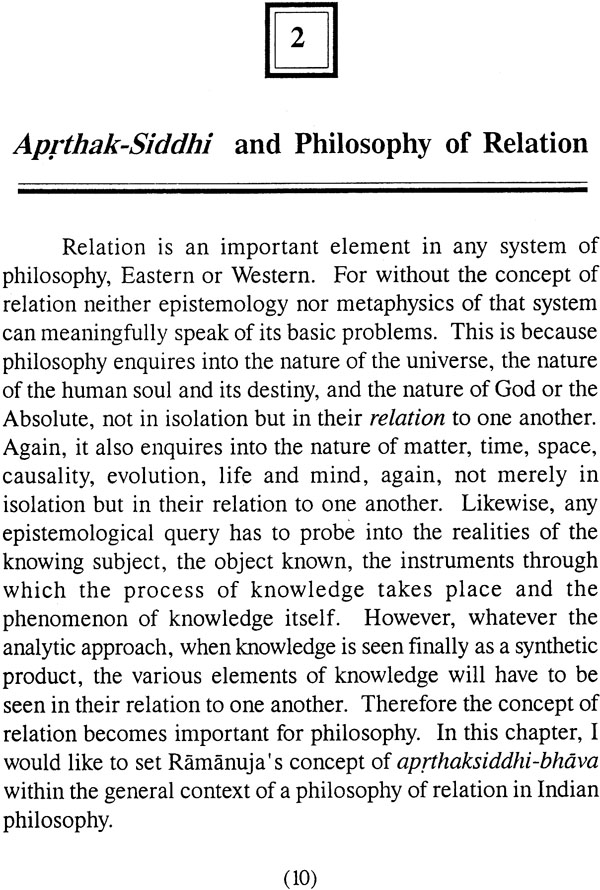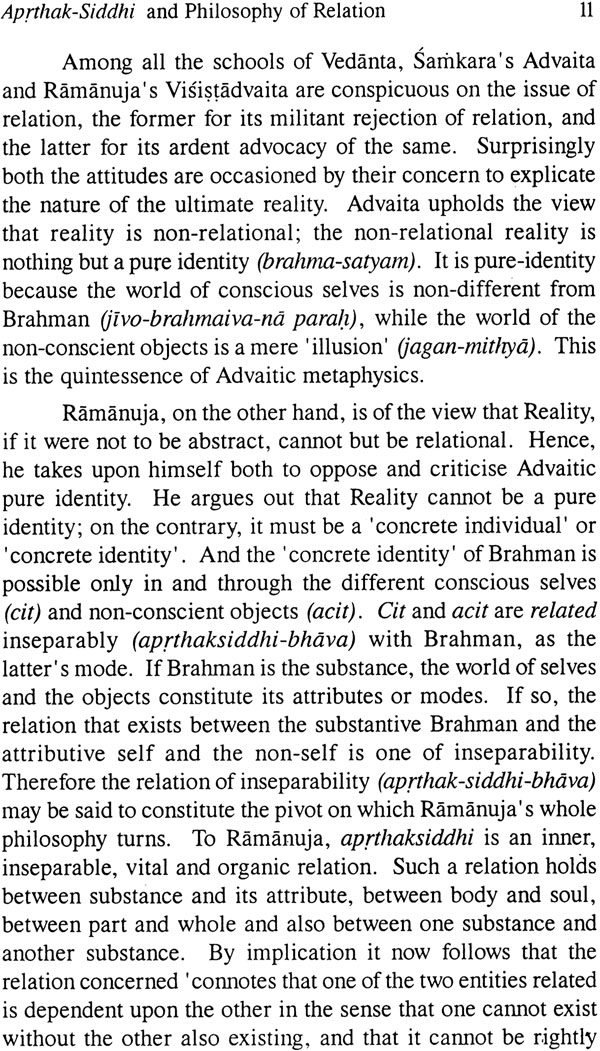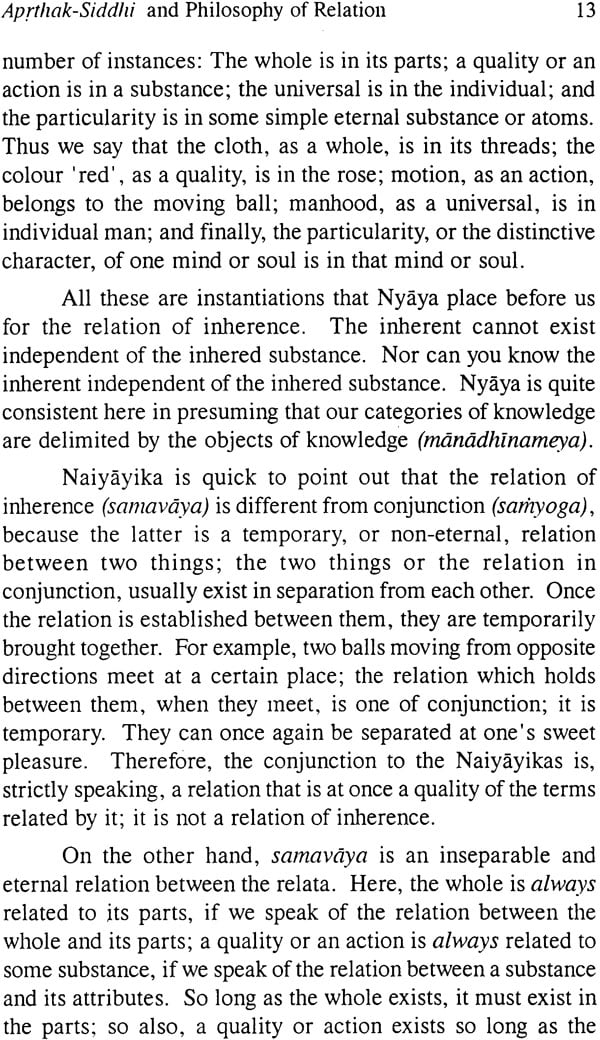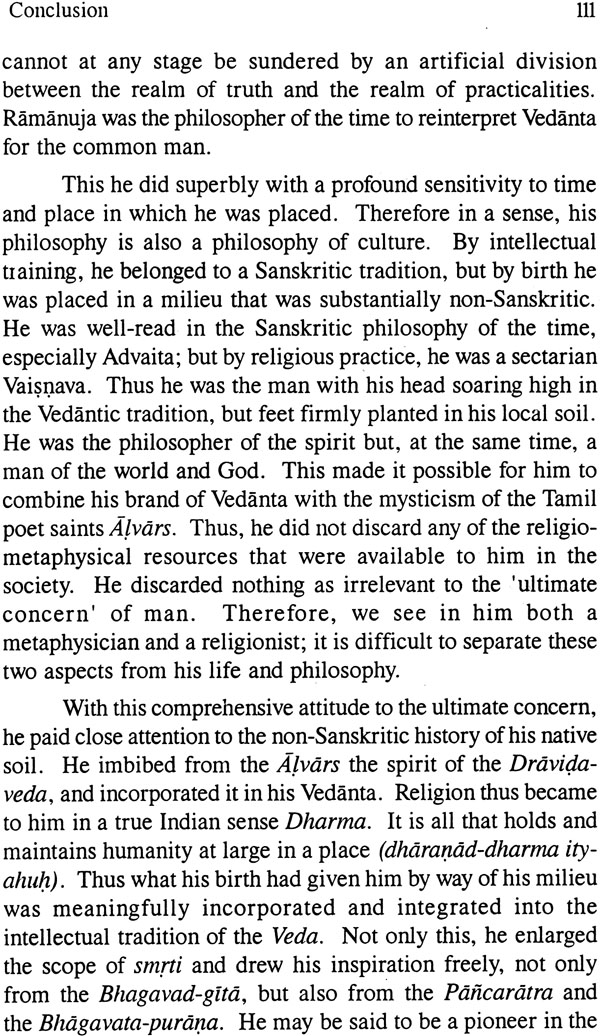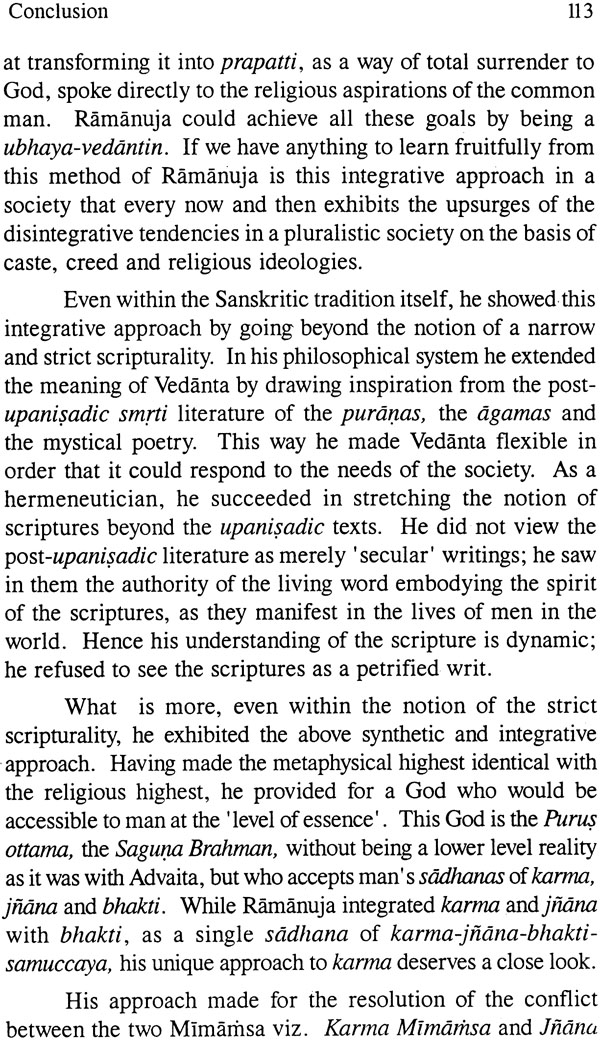
Aprthak-Siddhibhava: With Special Reference to Ramanuja's Metaphysics
Book Specification
| Item Code: | IDJ544 |
| Author: | Aparna Chakraborty |
| Publisher: | Kaveri Books |
| Language: | English |
| Edition: | 2001 |
| ISBN: | 8174790497 |
| Pages: | 131 |
| Cover: | Hardcover |
| Other Details | 9.0 inch X 6.0 inch |
| Weight | 300 gm |
Book Description
From the Jacket:
Brahman in Ramanuja's philosophy is not a non-relational and non-differentiated bare being, but a living reality, a relational whole, who is inseparably related with the order of individual self (cit) and of matter (acit). Thus the relation of inseparability (aprthak-siddhi-bhava) is fundamental of Ramanuja's metaphysics. In fact it is the central concept around which Ramanuja's whole philosophy revolves. Thus it is both possible and fruitful to view Ramanuja's metaphysics through the perspective of this unique relation of inseparability. In this book such an attempt is critically carried out.
This book is a critical account on Ramanuja Vedanta and it will be useful to the teachers, students, scholars and general readers of philosophy.
Dr. Aparna Chakraborty completed her studies from the North-Eastern Hill University, Shillong and is a Lecturer of philosophy in the Women's College, Shillong. Dr. Chakraborty keeps interest mostly in classical Indian philosophy. She is also the authoress of the book 'Karma: Freedom and Responsibility'.
Preface:
The philosophy of Vedanta is rooted in the Upanisads, the Bhagavad-gita and the Brahma-sutras of Badarayana. These three are technically known as prasthanatraya, which constitutes the foundation as well as the supreme authority of the Vedanta philosophy. Every great acarya, who spoke in the name of the Vedantic philosophy, therefore, found it necessary to write commentary on the prasthanatraya.
Crystallized in the chief commentaries on the prasthanatraya, Samkaras Advaita and Ramanuja's Visistadvaita are the most striking and thought provoking expositions. Both Samkara and Ramanuja's started with different philosophical standpoints to represent different types of Vedantic philosophy. Samkara's philosophy focussed on the non-relational reality. The non-relational reality of Samkara is nothing but a pure identity (tadatmya). It is a pure identity because the world of conscious selves (jiva) is non-different from Brahman, while the world of the non-conscient objects (jagat) is a mere 'illusion' (maya). Advaita thus denies relation on the ground that, if there should be relation (bhava) then there will also have to be difference (bheda). For relational consciousness presupposes a differential consciousness, too. Hence Brahman for Samkara is differenceless, therefore, relationless (abheda). Advaitin argues that all differences, therefore, all relations, are ultimately unreal.
Ramanuja, on the other hand, thinks that the denial of relations would infact reduce all things to nullity. Reality, to Ramanuja, too, in a sense, is the non-dual spirit (advaya). But it is not a distinctionless homogeneous identity (nirvisesa-tadatmya). as it is to Advaita. For Ramanuja, the ultimate reality cannot be a bare undifferentiated unity, but a unity that contains and admits, as such, differences which are all real. All differences, and all distinctions, for that matter, are deep within the heart of it. They are also not left unorganized, but are harmoniously co-ordinated. The differences are co-eval and co-eternal with the unity of the reality. Thus Ramanuja rejects the absolutistic principle of bare identity and affirms a living principle of differentiation at the very heart of reality. Ramanuja's absolute then is a concrete individual. It is an identity achieved in and through difference. Thus the relation of difference is fundamental to Ramajuja's philosophy. For Ramanuja pure identity, or pure being without any differentiation, is a metaphysical fiction. Ramanuja's Brahman is not a non-differentiated pure being. On the contrary, his Brahman possesses an internal difference (svagata-bheda) within itself, since it is internally related with the objective world (acit-prapanca) as well as the subjective world (cit-prapanca). The relation, that holds good between Brahman and the objective world, on the one hand, and between Brahman and the subjective world, on the other, is an inner, inseparable, vital and organic relation. Such a relation is called by Ramanuja as aprthak-siddhibhava. The relation of aprthak-siddhi, in a sense, is the central point around which Ramanuja's whole philosophy revolves. It should be both possible and fruitful to view Ramanuja's metaphysics through the perspective of this unique relation of inseparability. This book is a critical analysis of this aprthak-siddhi-bhava and its application in Ramanuja's metaphysics.
It gives me great pleasure to acknowledge my deep indebtedness to my revered teacher Dr. C. R. Agera, under whose supervision and guidance I completed this work. I am deeply indebted to my other teacher Dr. Jagat Pal for his guidance and help in all my efforts.
I am greatly thankful to my teachers Dr. S. C. Daniel, Prof. Sujata Miri and Prof. Mrinal Miri who have encouraged me in this work. I am deeply thankful to my teacher Dr. Raghunath Ghosh (Dept. of Philosophy, University of North Bengal) for his valuable suggestion whenever needed.
I express my thanks and gratitude to Mr. Joseph F. Khongbuh (Dept. of C. I. E. F. L. North-Eastern Hill University) for his constant help and encouragement. My sincere thanks go to my other well wishers for their help and support in accomplishing this task. Lastly I would like to express my heartiest thanks to the publisher Kaveri Books, New Delhi for publishing this book.
| Preface | ix | |
| 1. | Introduction | 1 |
| 2. | Aprthak-Siddhi and Philosophy of Relation | 10 |
| 3. | Critique of Relation: A Critique | 24 |
| 4. | Aprthak-Siddhattva between Brahman and Acit-Prapanca | 46 |
| 5. | Aprthak-Siddhattva between Brahman and Cit-Prapanca | 75 |
| 6. | Conclusion | 103 |
| Bibliography | 115 | |
| Index | 119 | |
